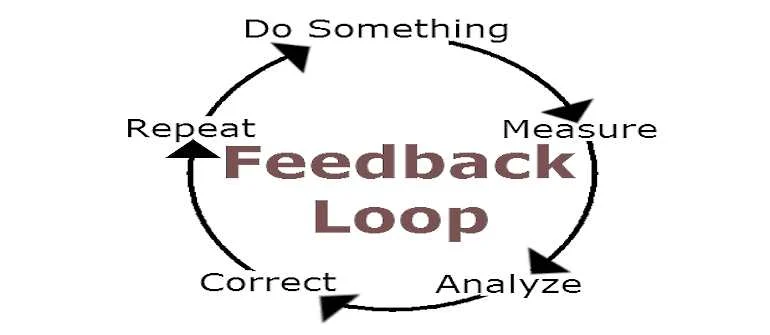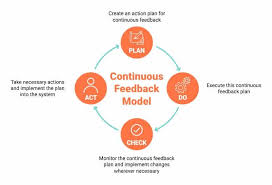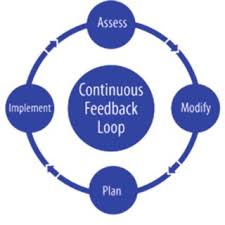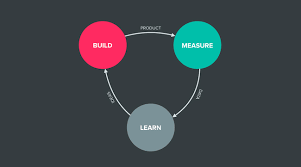Continuous Feedback Loop: 5 Best Ways to Increase Engagement

Continuous Feedback Loop
Let’s delve into the concept of continuous feedback loops and explore how they can impact organizations and teams.

What Is Continuous Feedback?
- gather feedback
- analyze feedback
- make decisions based on feedback data
- implement decisions
- gather more feedback
- see 2
- see 3
- etc.
-
- Continuous feedback is the practice of regularly sharing constructive feedback at work through ongoing and structured conversations between managers and employees.
- These conversations can occur during check-ins, informal interactions, or team meetings.
- Managers use continuous feedback to address work quality, productivity, and overall job satisfaction.
- It’s not just about praise; it also involves addressing areas for improvement and aligning feedback with business goals and career growth.
Why Is Continuous Feedback Important?
-
- Real-time feedback helps organizations understand their workforce dynamics promptly.
- Employees benefit from quick insights into their performance, rather than waiting for annual reviews.
- Continuous feedback improves communication, job understanding, performance, and overall satisfaction.
- It fosters engagement and retention, contributing to organizational success.
What is a Positive Feedback Loop?
What is Negative Feedback Loops?
The Continuous Feedback Loop: How It Works
-
- A continuous feedback loop is an ongoing process within an organization.
- Here’s how it operates:
- Employees provide feedback: They share insights, concerns, and suggestions.
- Leadership takes action: Managers consider the feedback and make informed decisions.
- Over time, this process becomes ingrained as a continuous improvement of the employee experience.
Continuous feedback model and system

Benefits of Continuous Feedback Loops:
Employee feedback loops can benefit your organization in many ways:
1. Continuous improvement through an ongoing process ensures better performance from employees. With clear expectations and a focus on exceeding customer expectations, slip-ups, and forgetfulness are minimized, allowing employees to consistently deliver exceptional results.
2. Continuous improvement fosters employee engagement as everyone is involved in the process. When employees are actively participating in improving processes and outcomes, they feel a sense of ownership and motivation, leading to increased engagement and commitment to their work.
3. Implementing a continuous feedback loop allows for a higher return on investment for surveys such as customer feedback or employee feedback. Rather than simply collecting and storing survey results, managers take action based on the feedback received, investing in surveys more valuable and impactful.
4. Continuous improvement creates an environment where employees are interested in providing their opinions and ideas. Instead of feeling frustrated or anxious during surveys, employees become willing participants who genuinely want to contribute their insights to drive positive change.
-
- Real-time insights: Organizations stay informed about employee experiences.
- Improved communication: Regular feedback enhances understanding and alignment.
- Enhanced performance: Employees receive timely guidance for growth.
- Higher satisfaction: Addressing concerns promptly leads to happier employees.
Remember, continuous feedback isn’t a one-time event—it’s an ongoing commitment to growth and excellence! 🌟🔄🗣️
Embracing the Symphony of Feedback Loops
When managers apply the continuous feedback loop
When managers apply the continuous feedback loop, they establish a process of ongoing communication and feedback with their employees. This involves regularly providing feedback, setting goals, and discussing performance to foster growth and improvement. The continuous feedback loop typically consists of the following steps:
- Setting clear expectations: Managers define performance expectations, goals, and objectives for their employees. This provides a framework for assessing progress and success.
- Regular check-ins: These check-ins can be formal meetings or informal conversations.
- Giving constructive feedback: They offer guidance and support to help employees develop their skills and capabilities.
- Goal setting and action planning: This aligns individual objectives with organizational goals and helps employees stay focused and motivated.
- Monitoring progress: They offer encouragement and recognition for achievements and address any obstacles or challenges that arise.
- Adjusting and adapting: Managers are open to adjusting goals, providing additional resources, or modifying action plans based on changing circumstances or feedback received. They ensure that employees have the necessary support to succeed.
Tips on a Continuous Feedback Loop

To make continuous feedback effective, it should become a habit within your organization. Whether you choose to use continuous improvement boards, weekly surveys, or dedicated software, it’s important to consistently implement and practice continuous feedback. Merely doing it once won’t yield significant results. This aligns with the law of inertia: to achieve continuous results, you must maintain a consistent effort.
Implementing continuous feedback loops frequently and promptly is key. Don’t wait for weeks or months before seeking feedback. Continuous feedback works best when you are actively listening and responding, not only to employee suggestions but also to any issues that arise along the way.
Embrace imperfection and allow room for experimentation and mistakes. Continuous improvement thrives when employees have the freedom to try new approaches and learn from what doesn’t work. Sometimes, the most valuable insights for continuous improvement come from discovering what doesn’t yield the desired results.
Leverage a Continuous Feedback Loop and Win
In a competitive landscape, companies with the best teams have a significant advantage. To retain top talent and attract exceptional new hires, implementing a continuous feedback loop proves to be a highly effective strategy. Instead of making one-time improvements, committing to ongoing progress strengthens the organization week by week.
When executed well, the compounding effect of continuous feedback leads to exponential improvements. This creates a genuine opportunity to outpace competitors in the market.
According to Mercer’s Global Performance Management Study, a mere 2% of companies have a culture where the quality and quantity of feedback set them apart. This presents a substantial opportunity for your organization to excel and become an attractive destination for top talent.
While your competitors may already be implementing employee feedback loops, positioning themselves to reap significant rewards in the future, it is crucial not to be left behind. The cost of falling behind in this regard is simply too high. Therefore, embracing continuous feedback becomes a strategic imperative to stay competitive and thrive in the long run.





